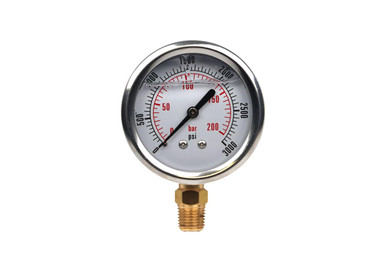I've noticed that my loader has less lifting power at the end of the day.
When the tractor is cold (not ran) and I start it running at idle I have no problem lifting the front loader ( 2023 BX23S).
It's very slow, but it has no problem lifting and curling the bucket.
Once I've ran it for a while at idle it doesn't want to lift the bucket at all.
Same RPMs (14 - 1500)
It's hard to tell how much power loss I have at 3500 RPMs and a full bucket. Loads are always different.
I get hydraulic fluid gets worn out, but this was happening even at just past 30 hours (I'm at 48 now).
It's not that hot here (hottest it's been is mid 70s, and only for a few hours. Usually in the 50s or 60s.
Operating mostly in shade.
HST fan is fine.
I'm using the bucket to it's capacity; lifting very heavy wet topsoil. Driving moderate speed (I don't want to tear up my lawn too bad) just under 150 feet, dump and return. So there's some bouncing.
This isn't full pace worksite speed, it's homeowner speed (stops for kids, ect).
Is this normal? I would think it would take more than this to weaken it, but I'm still getting used to this tiny thing.
I've used the backhoe, haven't noticed anything, but haven't done any specific tests either.
When the tractor is cold (not ran) and I start it running at idle I have no problem lifting the front loader ( 2023 BX23S).
It's very slow, but it has no problem lifting and curling the bucket.
Once I've ran it for a while at idle it doesn't want to lift the bucket at all.
Same RPMs (14 - 1500)
It's hard to tell how much power loss I have at 3500 RPMs and a full bucket. Loads are always different.
I get hydraulic fluid gets worn out, but this was happening even at just past 30 hours (I'm at 48 now).
It's not that hot here (hottest it's been is mid 70s, and only for a few hours. Usually in the 50s or 60s.
Operating mostly in shade.
HST fan is fine.
I'm using the bucket to it's capacity; lifting very heavy wet topsoil. Driving moderate speed (I don't want to tear up my lawn too bad) just under 150 feet, dump and return. So there's some bouncing.
This isn't full pace worksite speed, it's homeowner speed (stops for kids, ect).
Is this normal? I would think it would take more than this to weaken it, but I'm still getting used to this tiny thing.
I've used the backhoe, haven't noticed anything, but haven't done any specific tests either.


